- News
- Reviews
- Bikes
- Accessories
- Accessories - misc
- Computer mounts
- Bags
- Bar ends
- Bike bags & cases
- Bottle cages
- Bottles
- Cameras
- Car racks
- Child seats
- Computers
- Glasses
- GPS units
- Helmets
- Lights - front
- Lights - rear
- Lights - sets
- Locks
- Mirrors
- Mudguards
- Racks
- Pumps & CO2 inflators
- Puncture kits
- Reflectives
- Smart watches
- Stands and racks
- Trailers
- Clothing
- Components
- Bar tape & grips
- Bottom brackets
- Brake & gear cables
- Brake & STI levers
- Brake pads & spares
- Brakes
- Cassettes & freewheels
- Chains
- Chainsets & chainrings
- Derailleurs - front
- Derailleurs - rear
- Forks
- Gear levers & shifters
- Groupsets
- Handlebars & extensions
- Headsets
- Hubs
- Inner tubes
- Pedals
- Quick releases & skewers
- Saddles
- Seatposts
- Stems
- Wheels
- Tyres
- Health, fitness and nutrition
- Tools and workshop
- Miscellaneous
- Tubeless valves
- Buyers Guides
- Features
- Forum
- Recommends
- Podcast
feature
The stuff they never tell you about rim brakes: should you stick with tradition or switch to disc brakes?
Whether you should choose rim brakes or disc brakes is a big issue for more and more people these days with the bike market becoming mixed at ever-lower price points. We’ve run an article in the past about why you might want to think twice before going all-in with disc brakes, so we thought it fair to redress the balance by pointing out the hassles associated with rim brakes too…
> 8 reasons not to get disc brakes — find out the hassles before you switch
They’ll wear out your rims
Braking causes wear – you can’t get away from that fact. You can, though, decide which components get worn. With disc brakes, it’s relatively inexpensive and easy to replace the rotors, but with rim brakes, it’s the sidewalls of your rims. That might not be a big deal if you’re running cheap wheels and you don’t rack up big miles, but it can get you down if you’ve just invested a lot of money in a set of posh new hoops.
> How to tell when your wheel rims have worn out — and how to make them last longer
How long you can expect a rim to last? Shimano's Ben Hillsdon says, "It's difficult to say because it depends on the force of your braking and the cleanliness of your pads and your rim. If you can avoid excessively dragging the brakes and if you clean your bike regularly, paying particular attention to the braking track on the wheels and the face of the brake pad you'll significantly extend the life of your wheels."
Not all rims are the same either. Manufacturers will sometimes use a thin sidewall to reduce weight, but that’ll affect longevity.
Wheel manufacturers make rims from aluminium because it’s lightweight and the coefficient of friction doesn’t drop to the same extent as steel when it gets wet, but the aluminium alloys used are relatively soft and wear much faster.
Carbon fibre rims usually have a layer of material laid over the brake track to give a good braking performance, prevent heat buildup and prolong the life of the rim. Underneath this top layer is the raw carbon weave.
Hunt's Ollie Gray says, “Carbon brake tracks are much more resilient than alloy braking surfaces and generally will not show the same bowing/caving that alloy surfaces do. Whilst they will curve inwards to a degree, this is not normally the tell-tale. What you should look for instead is when the woven fibres of the carbon itself begin to become exposed or frayed.”
They don’t work well in the wet
Water on the road quickly gets transferred to your wheel rims while you’re riding so rim brakes don’t work as well in wet conditions. Water on any braking surface reduces friction and affects performance. The coefficient of friction with normal brake pads and an aluminium braking surface doesn’t drop as radically as it does with steel, but it’s still significant.
Disc brakes are affected by wet conditions too, but not as badly. Fixed to your hubs, disc brake rotors are further from the road surface than your rims and they don’t get covered in as much spray or mud.
Braking on carbon is… variable
The use of carbon fibre allows manufacturers to make lightweight and/or aero rims but you don’t get the best braking surface.
“If your wheels have carbon braking surfaces, you have to take some special considerations into account,” warns Canyon. “Most importantly, only use brake pads suitable for carbon wheels.
“We recommend brake pads made by or recommended by, the wheel manufacturer. Carbon brake pads usually wear out faster than conventional brake pads. In addition, the rims have weaker braking performance than aluminium rims, especially in wet conditions.”
Admittedly, braking on carbon rims has got a lot better since the early days. It used to be dreadful with little consistency, but manufacturers have gradually improved things.
In his recent review of Hunt’s 36 UD Carbon Spoke Wheelset on road.cc, Jamie Williams said, “Carbon braking surfaces have come a long way over the last decade, and here the braking is consistent without any surprise 'snatching', although as with all carbon wheelsets it does take a rotation or two to clear off water when conditions are wet.”
Hunt uses what it calls a Griptec basalt ceramic fibre brake-track to provide extra friction, Campagnolo has its All Conditions Carbon Control (AC3) technology which results in a textured braking surface, and other brands have their own tech, all of which leads to better braking, but it’s never as good as on aluminium.
One other issue with carbon that people sometimes mention is that heat produced by braking could cause the resin to soften, affecting the rim’s structural integrity. In the real world, though, this virtually never happens, not even to heavy riders descending steep mountains in high temperatures.
Brake pads can be expensive
Considering that they weigh just a few grams each and wear out pretty quickly, brake pads can be expensive. A pair of Zipp’s Tangente Platinum Pro Evo brake pads retail at £41, for example – and you’re going to need two pairs.
You need to choose the right brake pads
You need to select the right brake pads too. Most importantly, you need to get the right pads for the rim material: carbon or aluminium.
Beyond that, though, some brands suggest that particular pads will work best with their wheels, and different types of pads suit different conditions.
“There are a few variables to consider but on a basic level: softer compound pads, which offer greater modulation and are best used during the dry/summer months, won’t deteriorate the rim’s braking surface as much as they’ll deteriorate themselves,” says Hunt’s Ollie Grey. “Harder pads are better for year-round riding, but owing to their firmer compounds will cause more wear on the braking track over time."
You need to look after those brake pads
Stones, glass, and other debris from the road can sometimes get embedded in the compound of your brake pads. If you don’t notice it, this can damage the rim – gouging the braking surface – and affect the braking performance.
You need to remove the wheel to get a proper look at the surface of the brake pad. If you spot anything stuck in there you need to prise it out with tweezers.
Rim brake wheel tech is stalling
While disc brake development continues apace, there’s not a lot happening in the rim brake market.
The same is true of the wheels that are used with each. Many high-end wheels are released only for use with disc brakes these days. There’s no such thing as rim brake version of the Roval Rapide CLX or Zipp 353 NSW, for example.
Designers often say they like the fact that they don’t need to incorporate a brake track into a new aero wheel because it gives them freer rein in their efforts to reduce drag.
Of course, plenty of high-end wheels are still released in both rim brake and disc brake formats, but the market is clearly moving in only one direction.
Tyre size is limited
With disc brakes, your maximum tyre size is dictated by your frame and fork but with rim brakes, you have the additional limitation of the calliper. Most modern rim brake callipers take a maximum tyre width of 28mm, for example, so all-road and gravel riding aren’t open to you.
> 46 of the best road bike tyres 2021 - rubber for speed, durability and puncture resistance
Rim brakes can rub and squeal too!
People often moan about disc brakes making loads of horrible noises, but rim brakes can rub and squeal too.
Luckily, it’s usually easy to stop the brake pads rubbing on the rims by re-centring the calliper or altering the cable tension via the barrel adjuster, and many noises can be cured with simple maintenance, like toe-ing in the pads.
How to replace your road bike's rim brake pads
Slight wheel imperfections can be a big deal
A rim going slightly out of true during a ride isn’t a big deal if you’re using disc brakes. You might not even notice for a while.
You’ll notice pretty quickly with rim brakes. Braking will become inconsistent as the contact between the rim and the pad varies during the wheel’s rotation.
If your wheel goes a long way out of true you might get a knocking between the rim and the pad even when you’re not braking, and that’s really bad news.
Cable run is imperative to performance
Cable run makes a big difference to the performance of any cable-operated brakes – which includes some disc brakes as well as the vast majority of rim brakes.
Steel cables don’t like sharp corners which is a problem if you want fully internal cable routing with nothing showing anywhere between the lever and the calliper. The more convoluted the routing, the spongier the brakes feel.
Hydraulic brakes – which include some rim brakes, but not many – don’t care much about tight turns. You want to run the hose inside the handlebar, take a hard left into the stem, flip directly down into the fork steerer… and so on? Not a problem.
Everyone seems to want the clean look and slight aero benefit of internal cable routing these days. This is possible with rim brakes and traditional cables – the Trek Madone 9 Series we reviewed a few years ago had virtually no cable showing, for example, but this is far, far easier to achieve with hydraulic brakes.
Mat has been in cycling media since 1996, on titles including BikeRadar, Total Bike, Total Mountain Bike, What Mountain Bike and Mountain Biking UK, and he has been editor of 220 Triathlon and Cycling Plus. Mat has been road.cc technical editor for over a decade, testing bikes, fettling the latest kit, and trying out the most up-to-the-minute clothing. He has won his category in Ironman UK 70.3 and finished on the podium in both marathons he has run. Mat is a Cambridge graduate who did a post-grad in magazine journalism, and he is a winner of the Cycling Media Award for Specialist Online Writer. Now over 50, he's riding road and gravel bikes most days for fun and fitness rather than training for competitions.
Latest Comments
- Safety 21 min 38 sec ago
"cycling culture blamed for “thriving” bike theft environment"...
- Jamie Williams 30 min 48 sec ago
798mg of electrolytes but only 345mg of Sodium so going to need a fair few of those per hour, obviously something is going to be better than...
- slc 1 hour 52 min ago
Marsh lane was unchanged on Friday - I don't think the contractors have been back since the protest.
- chrisonabike 2 hours 27 min ago
She did say (in comment) they'd suggested to the council to make this access and emergency vehicles only and the council said no....
- S.E. 19 hours 28 min ago
My guess is that they sell mainly on the German market - feel free to correct me. That might explain why they are not "pushing" their products,...
- ktache 19 hours 52 min ago
Now Emily Chappell really liked the Lezyne , I have the HV version, good, but I find the handle uncomfortable in use. I've often wondered about the...
- biking59boomer 19 hours 10 sec ago
What about this one!? Taken in Cardiff Civic Centre 1939
- Muddy Ford 20 hours 3 min ago
Charlie Alliston got 18mths and is the reference case (because there are so few cases) for all campaigns by anti-cyclists that 'cyclists are not...
- belugabob 21 hours 4 min ago
My local football practice pitches (all weather, in a fenced off area, are regularly the scene of inconsiderate parking, with vehicles blocking the...
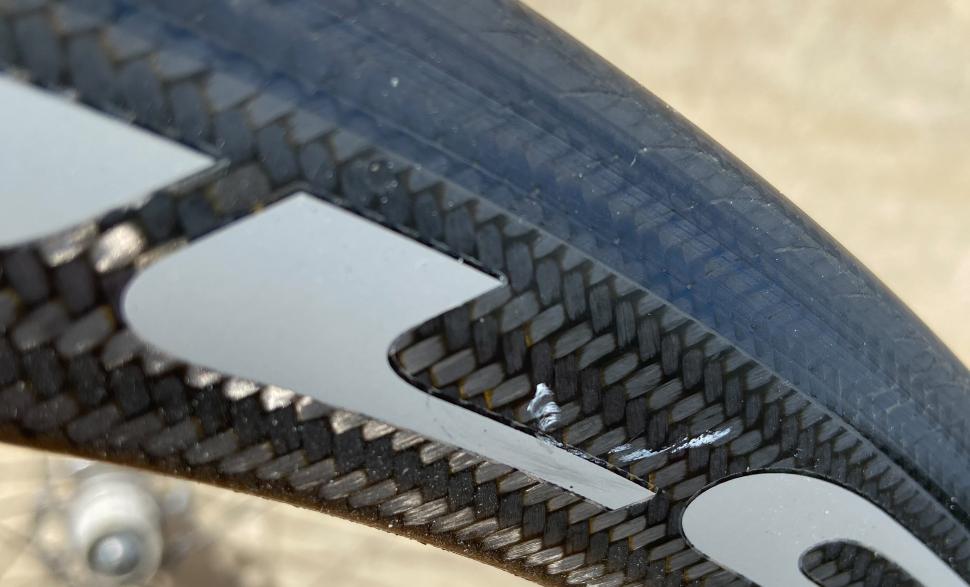
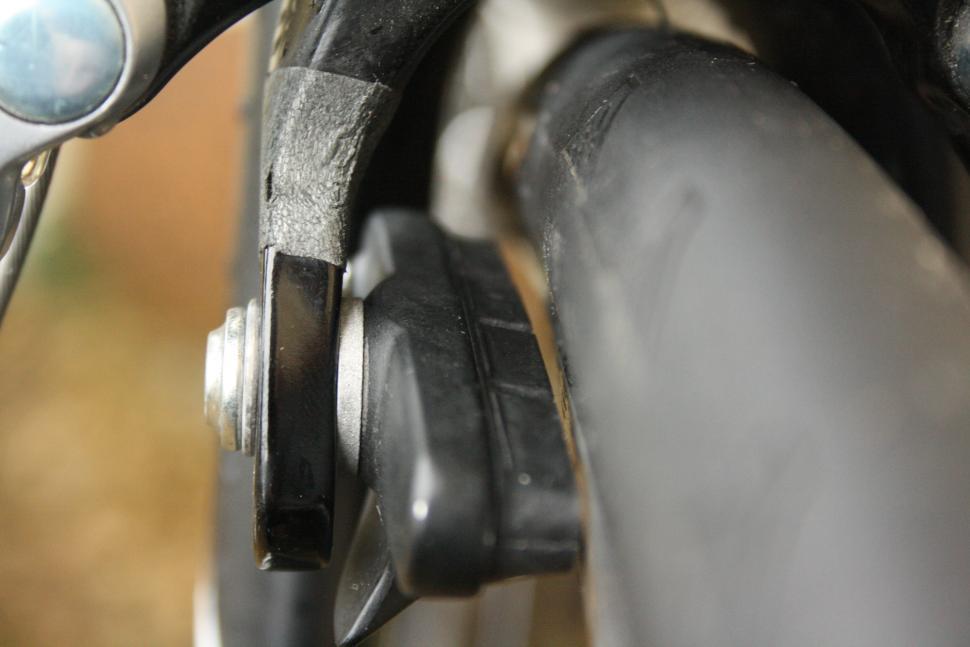
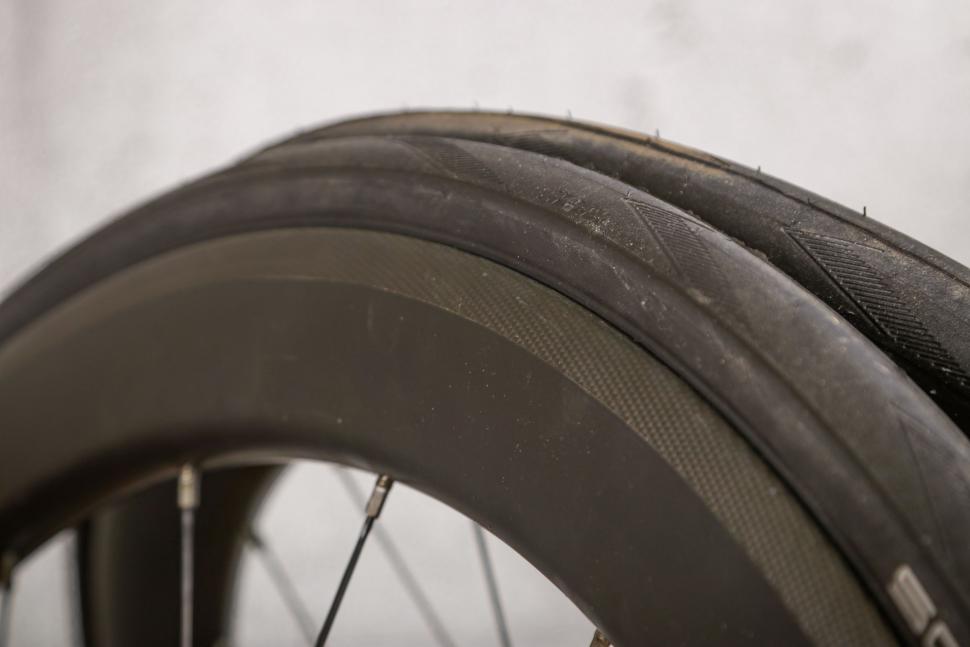
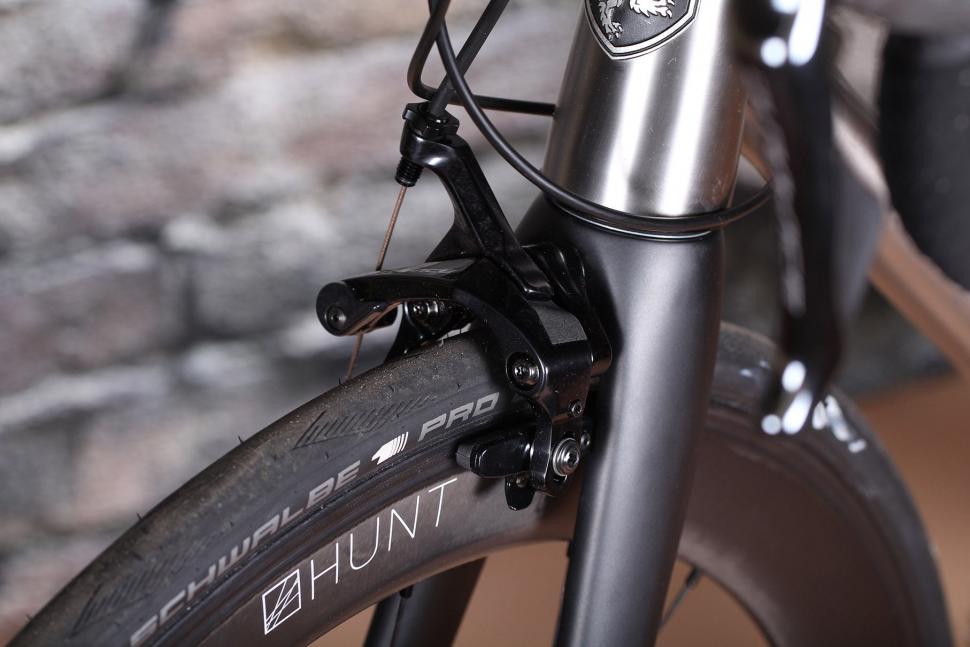

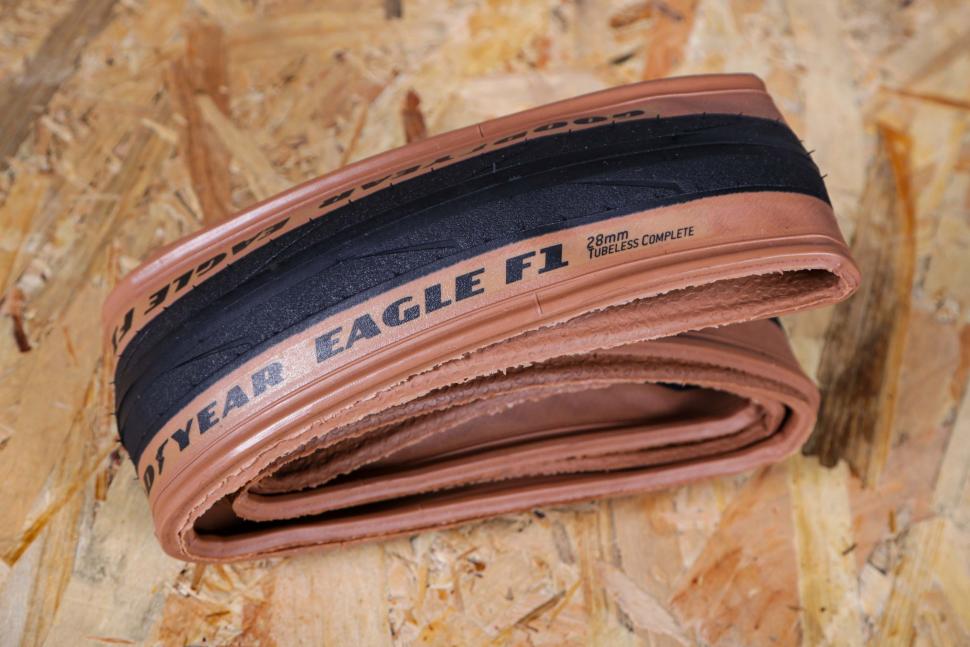
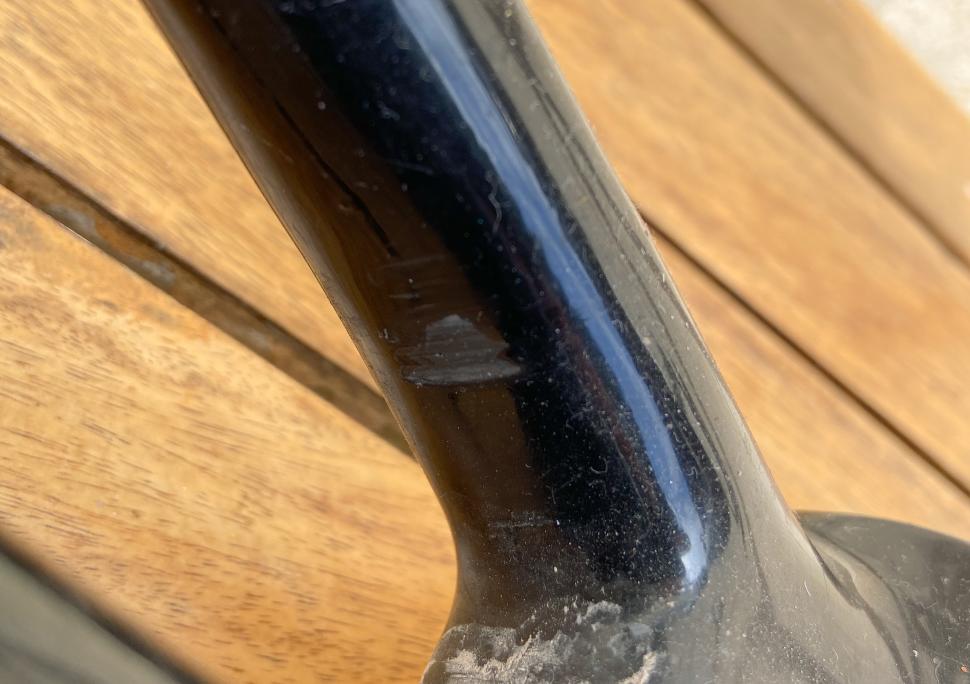
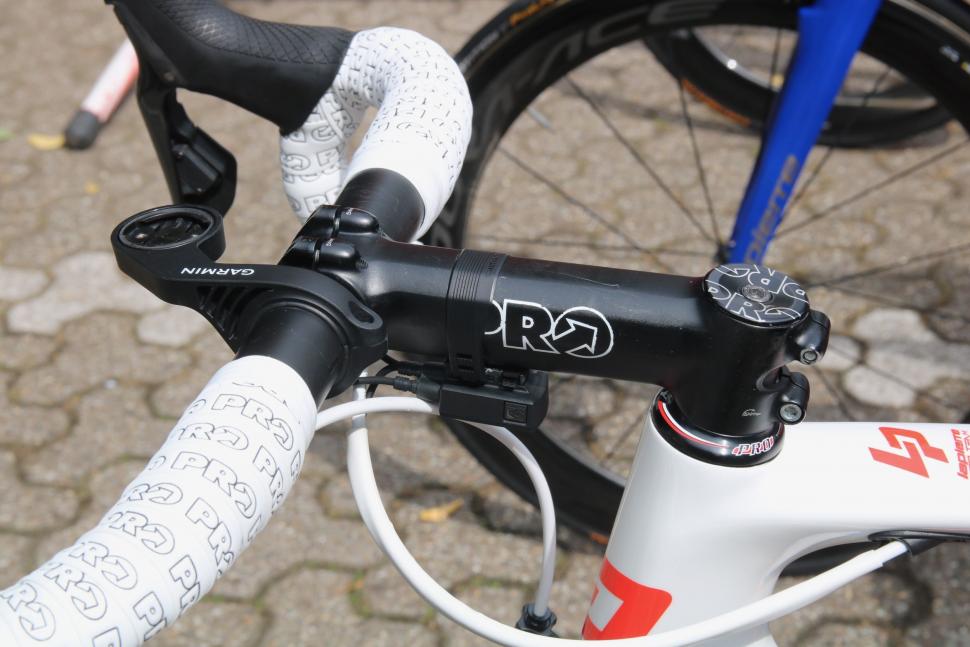
Add new comment
52 comments
What are these?
Rim brakes wearing out rims, only after about 30,000 to 35,000 miles that I use to get out of my rims riding in mountains, flatlanders rims lasted at least 40,000 miles; and the brake pads lasted about 10,000 to 15,000 miles, good quality aluminum rims are fairly inexpensive, and the pads are extremely cheap, cheaper that disk brake pads.
Today top level rims are not as widely sold as they use to be due to carbon fiber wheels taking over. But a good rim like the Boyd Altamont only costs $650 for the pair. Resin disk brake pads last about 600 miles on average and cost $30 on average, so over 30,000 miles pads will cost you $1,000, but we're not done yet because rotors will last between 700 miles to 8,000 miles (I'm thinking the shorter life is due to using metallic pads and a lot of rain use, so for argument sakes I'll say 8,000 miles) cost $32 on average, so you'll have to replace them at least 3 times in 30,000 miles at a cost of almost $100, so for aluminum rims it's far cheaper to have rim brakes than to have disk brakes, and my example is using rim brakes under the most adverse conditions, and I used the best conditions for disk brakes.
Of course with CF rims you really don't have a choice but to use disk brakes because rim brakes don't stop as well as rim brakes do on AL rims.
Those numbers seem very pessimistic. Do resin brake pads only last 600 miles? I wouldn't be happy if the rotors only lasted 700 miles, too.
And the rim brake numbers are highly optimistic. I've only one bike that's up around 30 000 miles and that is on its third set of aluminium rims. They have been good quality rims and pads, kept clean, and I don't drag the brakes on long descents; although to be fair bike+luggage+rider is typically north of 100kgs.
I cycle 6,000 miles a year on disc brake bikes, I can tell you for a fact that I do not replace brake pads 10 times a year. Nor have I spent $300 on pads
To suggest these are "best conditions for disk brakes" is farcical.
What about the poor Canti brakes? Enabling you to run wider tyres than a caliper brake bike.
Whilst I've found discs to be far superior, I really like the look of a canti braked Cyclocross bike. So I'm trawling through the well known buying sites looking for one.
I was happily running cantilevers on my gravel bike, some very posh Avid Shorty Ultimates.
Great wee brakes when combined with Swissstop BXP pads, enough power for CX/gravel, silent in all conditions (same can't be said for the discs that replaced them...) and once set up correctly (straddle wires just slightly higher than fork/seatstay braces) no clogging in mud. I have TRP mini-Vs on the commuter and they're even more powerful and easier to live with (one less cable to fiddle with).
I went disc after wearing through a front rim in 15 months but I'm now regretting that decision, I think replacing a £50 rim every 15 months or so is still preferrable to the hellish racket that cold wet disc brakes make, especially when you never get them hot on an average CX ride! My next gravel bike will definitely be mini-Vs as no need to worry about mud clogging.
It's not just the cost of the rims though, there's the new spokes and nipples, rim tape, and unless you can build your own wheels, employing the very talented wheel builder at the LBS.
Ceramic rims, the longevity of those made rims worthwhile, but they still have a life, and for my Good Bike's 26 inch ceramics, very much a short term technological dead end.
Granted, although I don't replace spokes unless there's a very good reason to.
I'm not really trying to argue it is cost effective to replace rims once a season, rather that it's worth this cost to me for quiet and adequately powerful braking. A very specific use case perhaps as everyone else either doesn't suffer or doesn't mind noisy brakes!
I ride both types of brakes on 4 bikes. For now, I prefer rim brakes on my road bike. The biggest advantage of rim brakes - no annoying disc brake rub.
Set them up correctly and you'll have no problem. Disc brake rub is not inevitable.
They're set up correctly but they rub and need adjustment due to the nature of rough gravel riding as well as loading and unloading the bike from the vehicle. Disc brake rub is inevitable and on a road bike that metallic 'tic' is annoying, especially when it's not your bike you're listening to
Disc brake rub is inevitable
I'm with Eton on this one- it manifestly isn't inevitable because I don't have it after 20 hard months, 7 trips with a heavy trailer from Garstang to the hills above Coniston, various cycle camping trips in the Lakes and Pennines and lots of other miles. This bike uses SRP Spyres and only cost £650 new. It's had replacement pads front and rear once, and it looks like I'll get a year out of both front and rear. Squealing only occasional, and lots of punctures until I replaced with Marathon Plus, so numerous wheel in and out procedures. What I haven't done is transport the bike by car, bus or train- manpower only. Maybe that's what bends the rotors?
Dont buy those water soluble rim brake blocks: they may be cheap, but they cost you more in the long run...
I managed to wear down my Mavic CrossRides down to what I assume to be the wear track in only 5 months of very filty commuting last winter. The softest of KoolStop salmons too.
Admittedly, I did buy them to so that I could preserve my last set of 26inch Mavic XC717s.
"You need to look after those brake pads" Blocks, they are called brake blocks, pads are for discs.
Actually it can be either, if what attaches to the calipers is moulded in one single piece, that's a brake block, if there is a brake shoe that attaches to the caliper then a brake pad fits into it.
brake pad
https://www.wiggle.co.uk/lifeline-performance-carbon-road-brake-inserts-...
brake block
https://www.wiggle.co.uk/lifeline-essential-v-brake-pads-pack-of-4
(even though wiggle still call them pads.)
One doesn't just 'make the jump to discs'. Its not like buying a new saddle, or a groupset.
This is true, a mate of mine can't afford a 'whole new bike' and likes to build them up as he goes along, like triggers broom.. jumping to disc's is problematic for this approach.
In the early 2000s I had an orange evo2 mountain bike frame which had been supplied with mountings for either disc or v brakes, so I was able to make the jump from v brakes to disc brakes. But I doubt there are many (any) frames sold like this now.
My circa 2014 Boardman hybrid came with the mountings,but when you cost up the wheels,discs,calipers it starts to feel like new bike time instead, as sure enough the drive train would be the very next thing to go.
So I dont know how worthwhile it is doing it.
Pages